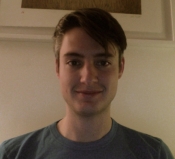Heroes and Villains
The ethical dimension of history poses the problem of judging those that acted in the past. It, at times, tempts us as teachers to construct a world of black and white for our students: good or evil, traitor or freedom fighter, hero or villain. These binaries of course are reflected to varying degrees in endless movies, novels, and other fictional and non-fictional narratives we face on a regular basis.
The problem of course lies in applying this structure to the ‘greyness’ of real life, and in this case, to a distant past that may contain different social norms, beliefs and worldviews. This discussion reaches beyond school history into academic history with one example coming from Simon Fraser University. SFU’s History Department is taking up this ethical challenge offering a lecture series entitled Heroes and Villains, questioning how we judge historical actors, hoping to break down the binary of good/evil by complicating figures, such as Mahatma Gandhi, Pierre Trudeau, and Martin Luther King Jr.
In the high school classroom, the level of discussion and analysis may be at a more rudimentary level; however, this year I hope to challenge my students to evaluate several significant Canadian historical figures using the lens of Hero or Villain as a starting point. I am doing this not to encourage my students to definitively judge the moral character of historical figures into two categories, but instead to consider how placing people in these binaries encourages certain narratives and potentially distorts the past and people who occupied it.
Introducing Heroes and Villains to a Grade 10 Social Studies Class
My plan is as follows:
1) In the first class, we will spend time setting criteria for what is considered a hero and villain in terms of historical figures. I will start by asking students to name a heroic and villainous figure they have heard of ‘in history’. After sharing a few names we will list characteristics we associate with those individuals.
2) Next, I plan to give the students prompts to further develop the characteristics of a historical hero and villain. For example: A hero/villain acts like… a hero/villain never/always… a hero’s/villain’s main goals are usually… While seemingly basic, I hope these prompts will help my students think about what we currently understand to be heroic and villainous in our contemporary society. Once we have an agreed set of criteria. Every student will get copy.
3) Following this we will apply the criteria throughout the year to various historical figures we come across in the curriculum (1815-1914 Canada). Obvious figures come to mind, such as the well-trodden territory of Louis Riel. However I hope to challenge some commonly accepted heroes of the high school Canadian textbook, such as Prime Minister John A. Macdonald. This is not to defame J.A. Macdonald’s reputation by calling him a villain, but to complicate his often-heroic representation in Canadian curriculum and heritage projects.
4) When engaging in this potentially controversial discussion, it is important to keep some clear guidelines in place for my students. I have altered the guideposts from The Big Six (Seixas & Morton, 2013) to create three guiding questions to consider as a class before engaging my students in ethical judgments about heroes and villains:
a) What historical context existed at the time (i.e. in what ways did people think differently about the world at the time? What was considered acceptable or unacceptable)?
b) How might standards of right and wrong have changed since then?
c) How might this person’s actions impact people or communities today?
The end goal of course is not to get my students to agree who is a villain and who is a hero, but to show that the people of the past led complicated lives and by putting them into binaries we distort the past. I also hope this project will help my student examine what strategies are used by historians, textbook writers, and historical movies to create heroes and villains in the past.
I will blog further about the success and failures of this idea as the year progresses.


